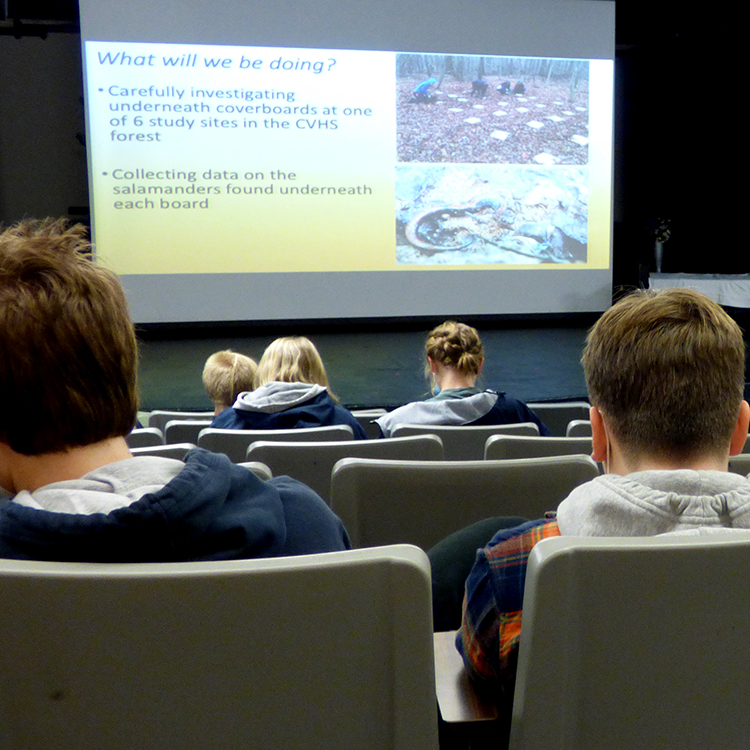Students in Ms. Moran’s and Mr. Stetzer’s Biology classes had a special learning opportunity this week. In partnership with the Harris Center for Conservation Education, they got to engage in an actual applied science community project involving woodland salamanders.
The Harris Center maintains a series of study plots as part of the Salamander Population & Adaptation Research Collaboration Network (SPARCnet), a regional research effort aimed at understanding the effects of climate change on woodland salamanders. Each plot consists of 50 small wooden “coverboards” that appeal to woodland amphibians — especially red-backed salamanders (Plethodon cinereus) — as sources of shelter.
With the help of student scientists, the Center surveys the plots for salamanders each spring and fall. By keeping track of the salamanders found under each board, scientists can begin to get a sense for the abundance and distribution of red-backed salamanders and compare local findings with more than 30 other SPARCnet sites from Virginia to Ontario.
As naturalist John Benjamin of the Harris Center noted in the introductory presentation in the Lucy Hurlin Theatre, the red-backed salamanders are an important indicator species for the impacts of human land use, associated reductions and degredations in salamander habitat, as well as overall climate change.
Perhaps the most astounding fact of the Harris Center presentation: In a typical year, the mass of surveyed redbacked salamanders exceeds the mass of all other vertebrate animals in the same plot of land combined!




